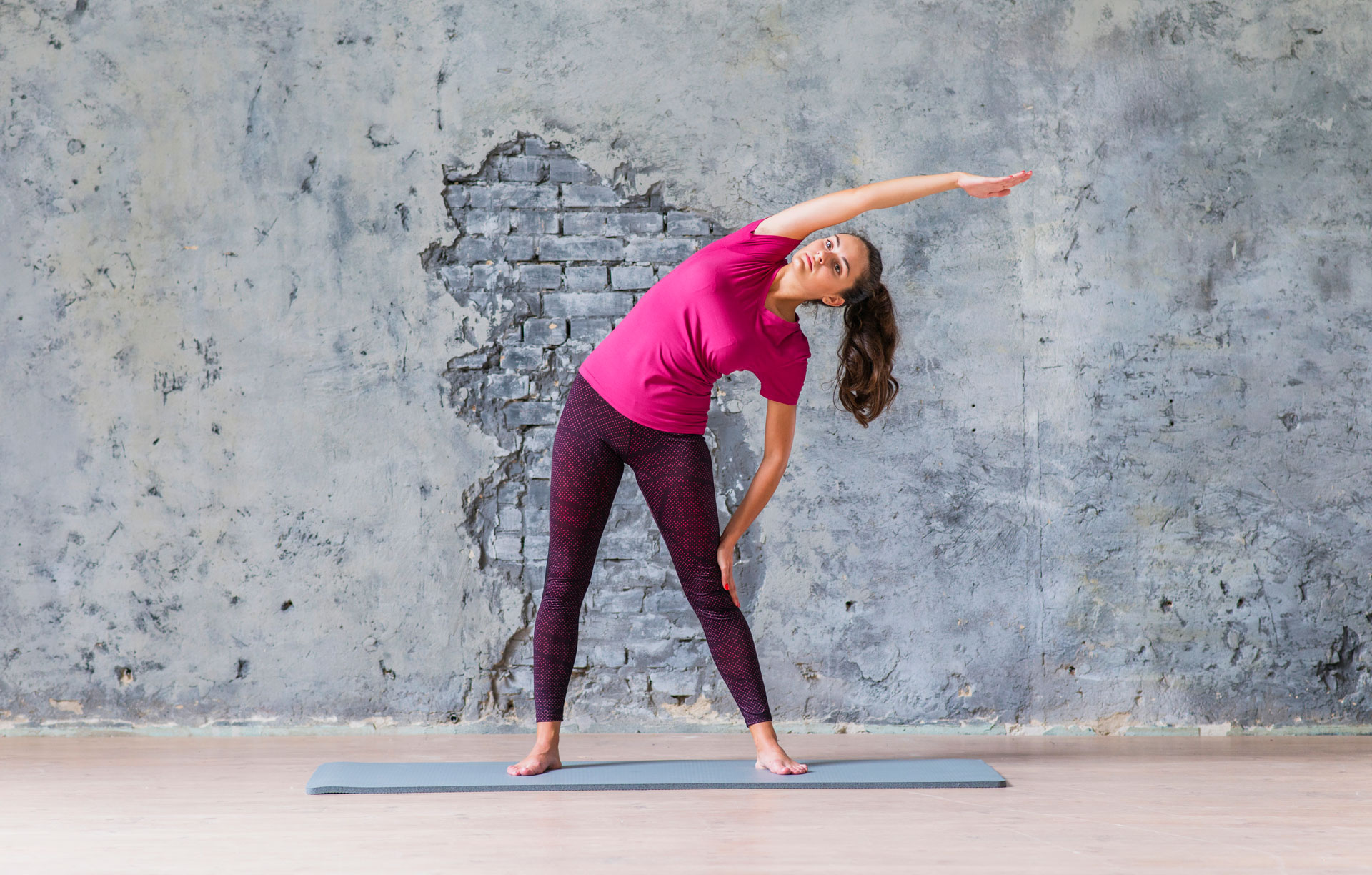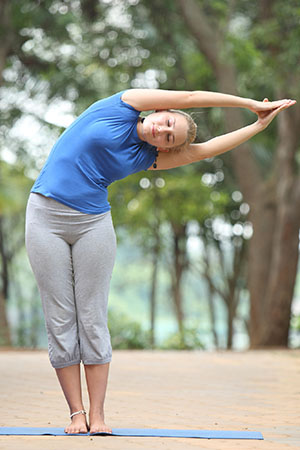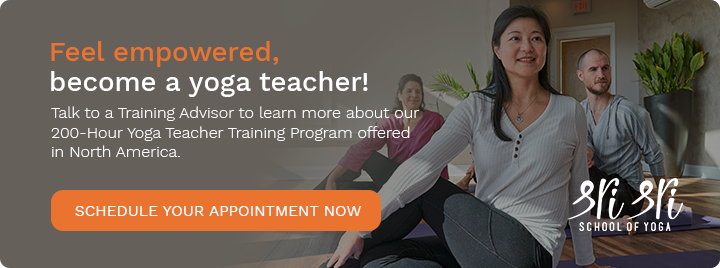Lean step-by-step instructions on how to do the Angle pose or Konasana. It strengthens your spine, relieves back pain and constipation. Try now. Today we will learn two variations of sideways bending standing pose Angle pose – Angle pose 1 and 2. While the Seated bound angle, Reclined bound angle pose, Eight angle pose (Astavakrasana), and Extended side angle pose are very popular, these two standing poses are easy to do yet offer a host of benefits.
Angle pose l — Konasana l (Kone-aa-sun-aa)
 This is a side-stretching posture that provides a deep opening in the side body. The pose gets its name from the Sanskrit words kona, meaning angle, and asana, meaning pose.
This is a side-stretching posture that provides a deep opening in the side body. The pose gets its name from the Sanskrit words kona, meaning angle, and asana, meaning pose.
Level of difficulty: Easy/Beginner
Step-by-step instructions
- Stand straight on your yoga mat with feet hip-width distance apart and arms alongside the body.
- Keep your knees pointing forward and soft (not locked or hyperextended). Legs firm and well-grounded.
- Breathe in and raise your left arm up so that your fingers point towards the ceiling.
- Breathe out and bend to the right, first from the spine, and then move your pelvis to the left, deepening the bend. Keep your left arm pointing up.
- Turn your head to look up at the left palm. Straighten your elbows.
- As you inhale, straighten your body back to the center.
- As you exhale, bring the left arm down.
- Repeat with the right arm.
Benefits of Angle pose 1
- Stretches the sides of the body and spine
- Tones the arms, legs, and abdominal organs
- Helps relieve back pain
- Increases spine flexibility
- Helps relieve constipation
- Helps relieve sciatica
Precautions
If you have the following conditions, you need to be careful while practicing this asana, or you may skip it.
- Severe back pain
- Spondylitis
Preparatory and follow up poses
- Upward salute | Urdhva hastasana (preparatory)
- Standing backward bend | Ardha chakrasana (preparatory)
-
Gate pose | Parighasana (follow up)
Angle pose 2 — Konasana II (Kone-aa-sun-aa)
 This is a deep side bend that opens up both sides of the body, chest, and lungs. It gets its name from the Sanskrit words, Kona, meaning angel, and asana, meaning pose.
This is a deep side bend that opens up both sides of the body, chest, and lungs. It gets its name from the Sanskrit words, Kona, meaning angel, and asana, meaning pose.
Level of difficulty: Easy/Beginner
Step-by-step instruction
- Stand on your yoga mat with your feet 2-feet apart, with your weight balanced equally on both sides.
- Breathing in, raise your arms overhead and join your palms together, interlacing your fingers to form a steeple position. Make sure your arms are touching your ears.
- Breathing out, bend to the right. Focus on straightening your elbows, pressing your feet firmly into the ground, and moving your pelvis to the left.
- Make sure your hips or pelvis, your chest, and face are facing forward all the time.
- Hold, feeling the stretch along the side of your body. Relax in this posture.
- Breathing in, return to a standing position.
- Breathing out, bring the arms down by your sides.
- Repeat the posture on the other side.
Benefits of Angle pose 2
- Stretches the sides of the body and the spine.
- Tones the arms, legs, and abdominal muscles and organs.
Follow-up and preparatory poses
- Mountain Pose | Tadasana (Preparatory)
- Standing Spinal Twist | Katichakrasana (Preparatory)
- Sideways Bending – One Arm | Konasana 1 (Preparatory)
- Tree Pose | Vrikshasana (Follow-up)
- Standing Backward Bend | Ardha Chakrasana (Follow-up)
Learn more
It is important to learn and practice yoga under the supervision of a trained teacher. You are encouraged to attend our yoga foundation course and learn more about each yoga pose in detail. This program is ideal if you are very new to yoga.
Want a regular yoga practice?
If you are already familiar with basic yoga poses and breathing practices, but are looking for supportive guidance, we can help you. Our certified yoga teachers offer 60-75 minute yoga and many more speciality classes in our virtual yoga studio. Find out more and join today! While learning and practicing yoga can result in improved health, know that it is not a substitute for medical treatment. In the case of a medical condition, practice yoga after consulting a doctor.
Are you interested in becoming a 200-Hour certified yoga teacher?
Sri Sri School of Yoga is a registered school with Yoga Alliance. It offers the most authentic, traditional (scripture-based), and accessible 200-Hour teacher training programs in online, hybrid and in-person set up.


